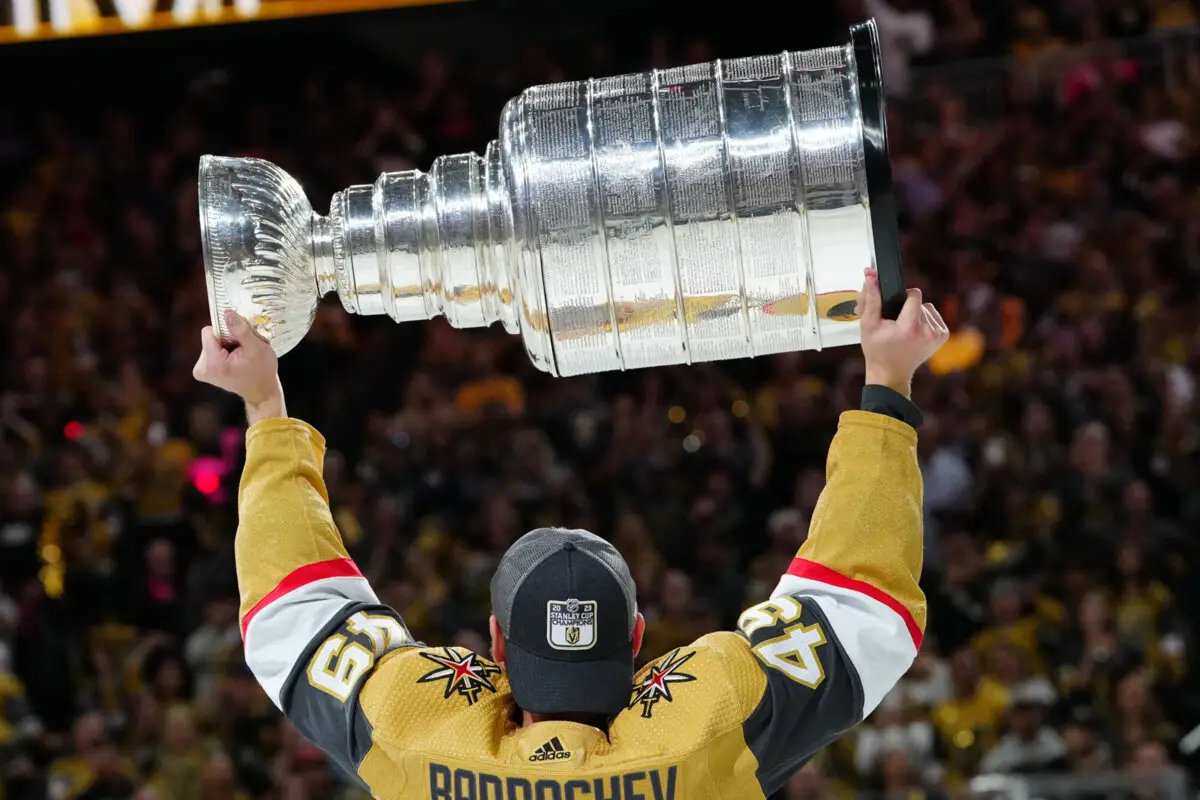The Gagarin Cup is more than just an award, it is a true symbol of victory and the pursuit of greatness in the KHL Ice Hockey League. When it was presented to the public for the first time, fans saw not just a piece of metal, but a dream come true. Since the inception of the Kontinental Ice Hockey League, the trophy has been the pinnacle to which all teams aspire, a symbol of supreme skill and spiritual strength, just as the first cosmonaut – Yuri Gagarin – was.
The history of the Gagarin Cup: how the idea of creating the KHL’s most important prize came about
It all began in 2008, when a new world-class challenger emerged in the world of ice hockey – the Kontinental Hockey League. From the very beginning, the organisers knew that the new tournament needed a special trophy that would symbolise the pursuit of new heights. Inspired by the image of Yuri Gagarin, the first man to fly into space, it was decided to name the trophy after him. The history of the cup’s creation reflects the ambitions of the league, the desire for innovation and the willingness to overcome all obstacles like the astronauts.

The idea was born as a symbol of the endless forward motion, constant development and striving for perfection that is the essence of ice hockey. Gagarin’s legendary name was the perfect choice, as it reflects the courage and risk-taking inherent in every athlete who takes to the ice.
The creation process: the design and unique details of the Gagarin Cup
The process involved a group of talented craftsmen, including artists, designers and experienced jewellers. To develop the unique design, the KHL invited leading experts known for their mastery of sports trophies. The best materials were used: Silver and gold plating as well as a special alloy that ensures durability and special aesthetics.
The design of the Gagarin Cup contains many symbolic elements. For example, the names of the winning teams are engraved on the trophy. This symbolises the inseparable link between the history of the league and its heroes. Who created the Gagarin Cup? A team led by the famous master Andrei Golikov was responsible for the creation, who managed to give the cup a shape that simultaneously embodies the power and elegance of ice hockey. The result was a unique object that has become an integral part of the league’s history.
Interesting fact: At every stage of development, there were challenges that required unusual solutions. For example, engraving the complex curves of the bowl required the development of special equipment.
The Gagarin Cup and its significance for the teams
 The Gagarin Cup is not just an award for the teams, but a true symbol of recognition of their skills and perseverance. It epitomises not only a sporting achievement, but also team unity and the ability to work together towards a common goal.
The Gagarin Cup is not just an award for the teams, but a true symbol of recognition of their skills and perseverance. It epitomises not only a sporting achievement, but also team unity and the ability to work together towards a common goal.
The significance of the trophy to the league and the fans is that it has become a symbol of honour and courage, the embodiment of the hockey dream. Each element of the Gagarin Cup has its own meaning:
- The gold plating symbolises greatness and success. It gives the trophy the appearance of luxury and emphasises the importance of winning the tournament.
- The ice image and the ice crystal engraving reflect the rigours of ice hockey competition and show that the path to victory leads through the icy elements.
- The ribbons attached to the handles symbolise team spirit and team effort, reminding us that victory is always the result of the combined efforts of players, coaches and support staff.
- The weighted shape represents a balance between physical strength and skill, which is important in hockey. The bowl is not too massive, but heavy enough to emphasise the importance and weight of the achievement.
The winners and the teams that have made their mark on history
Since its inception, the Gagarin Cup has been a source of pride for many teams. The first winner of the trophy in 2009 was Ak Bars from Kazan, who beat Lokomotiv Yaroslavl in a dramatic series. This victory was a real sensation and is remembered by fans as one of the most exciting finals in the history of the KHL.
Winners of the Gagarin Cup include teams such as SKA St. Petersburg, which won the trophy in 2015 and 2017 thanks to the strong play of coach Oleg Znark. Also worth mentioning is ZSKA Moscow, whose victories in 2019 and 2022 cemented the club’s reputation as one of the most dominant in the league.
Each of these teams was characterised by a unique style of play, be it a strong attack, ironclad defence or brilliant tactics. The trophy epitomises their efforts, their ability to handle pressure and succeed in even the most difficult situations.
The Gagarin Cup today: role in the KHL and the future
Today, the trophy plays an important role in the popularisation of hockey and the development of the Kontinental Hockey League. The trophy has become a symbol for players, fans and everyone involved in the world of hockey. The Gagarin Cup motivates teams to new achievements and inspires young hockey players who dream of lifting it one day.
The KHL and the Gagarin Cup are more than just a tournament and a trophy. They are a single mechanism that raises the sport to a new level and creates the conditions for a colourful and fair fight. The cup has become a unifying element between countries and teams, strengthening sporting ties and attracting new talent.
Interestingly, thousands of fans gather around the trophy every year, and their presence at the playoff games gives it a special atmosphere that makes every moment on the ice unforgettable.
Conclusion
 The Gagarin Cup has become a true symbol of the KHL, uniting teams, fans and the entire hockey community. It symbolises the toughness, talent and will to win that make hockey one of the most exciting games. Every team dreams of etching their name in the Cup’s history, as it is a symbol of true hockey expertise and the pursuit of new heights.
The Gagarin Cup has become a true symbol of the KHL, uniting teams, fans and the entire hockey community. It symbolises the toughness, talent and will to win that make hockey one of the most exciting games. Every team dreams of etching their name in the Cup’s history, as it is a symbol of true hockey expertise and the pursuit of new heights.

 en
en  ru
ru  de
de  ar
ar  es
es  hi
hi  fr
fr  nl
nl  it
it  pt
pt  el
el 



